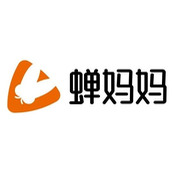浅谈request.getinputstream只能读取一次的问题
首先,我们复习一下InputStream read方法的基础知识,
java InputStream read方法内部有一个,postion,标志当前流读取到的位置,每读取一次,位置就会移动一次,如果读到最后,InputStream.read方法会返回-1,标志已经读取完了,如果想再次读取,可以调用inputstream.reset方法,position就会移动到上次调用mark的位置,mark默认是0,所以就能从头再读了。
当然,能否reset是有条件的,它取决于markSupported,markSupported() 方法返回是否可以mark/reset
我们再回头看request.getInputStream
request.getInputStream返回的值是ServletInputStream,查看ServletInputStream源码发现,没有重写reset方法,所以查看InputStream源码发现marksupported 返回false,并且reset方法,直接抛出异常。
InputStream.java
综上所述,在request.getinputstream读取一次后position到了文件末尾,第二次就读取不到数据,由于无法reset(),所以,request.getinputstream只能读取一次。
总结:
这个问题最根本还是对java IO的read、reset方法的深入理解,尤其是read方法的内部实现原理。
附ServletInputStream.java源码
| 代码如下 | 复制代码 |
|
/*
* Licensed to the Apache Software Foundation (ASF) under one or more
* contributor license agreements. See the NOTICE file distributed with
* this work for additional information regarding copyright ownership.
* The ASF licenses this file to You under the Apache License, Version 2.0
* (the "License"); you may not use this file except in compliance with
* the License. You may obtain a copy of the License at
*
*
*
* Unless required by applicable law or agreed to in writing, software
* distributed under the License is distributed on an "AS IS" BASIS,
* WITHOUT WARRANTIES OR CONDITIONS OF ANY KIND, either express or implied.
* See the License for the specific language governing permissions and
* limitations under the License.
*/
package javax.servlet;
import java.io.IOException;
import java.io.InputStream;
/**
* Provides an input stream for reading binary data from a client request,
* including an efficient
readLine method for reading data one line * at a time. With some protocols, such as HTTP POST and PUT, a
*
ServletInputStream object can be used to read data sent from the * client.
*
* A
ServletInputStream object is normally retrieved via the * {@link ServletRequest#getInputStream} method.
*
* This is an abstract class that a servlet container implements. Subclasses of
* this class must implement the
java.io.InputStream.read() method. *
* @see ServletRequest
*/
public abstract class ServletInputStream extends InputStream {
/**
* Does nothing, because this is an abstract class.
*/
protected ServletInputStream() {
// NOOP
}
/**
* Reads the input stream, one line at a time. Starting at an offset, reads
* bytes into an array, until it reads a certain number of bytes or reaches
* a newline character, which it reads into the array as well.
*
* This method returns -1 if it reaches the end of the input stream before
* reading the maximum number of bytes.
*
* @param b
* an array of bytes into which data is read
* @param off
* an integer specifying the character at which this method
* begins reading
* @param len
* an integer specifying the maximum number of bytes to read
* @return an integer specifying the actual number of bytes read, or -1 if
* the end of the stream is reached
* @exception IOException
* if an input or output exception has occurred
*/
public int readLine(byte[] b, int off, int len) throws IOException {
if (len
return 0;
}
int count = 0, c;
while ((c = read()) != -1) {
b[off++] = (byte) c;
count++;
if (c == 'n' || count == len) {
break;
}
}
return count > 0 ? count : -1;
}
/**
* Returns
true if all the data has been read from the stream, * else
false. *
* @since Servlet 3.1
*/
public abstract boolean isFinished();
/**
* Returns
true if data can be read without blocking, else *
false. If this method is called and returns false, the * container will invoke {@link ReadListener#onDataAvailable()} when data is
* available.
*
* @since Servlet 3.1
*/
public abstract boolean isReady();
/**
* Sets the {@link ReadListener} for this {@link ServletInputStream} and
* thereby switches to non-blocking IO. It is only valid to switch to
* non-blocking IO within async processing or HTTP upgrade processing.
*
* @param listener The non-blocking IO read listener
*
* @throws IllegalStateException If this method is called if neither
* async nor HTTP upgrade is in progress or
* if the {@link ReadListener} has already
* been set
* @throws NullPointerException If listener is null
*
* @since Servlet 3.1
*/
public abstract void setReadListener(ReadListener listener);
}
| |
相关文章
精彩推荐
-
 下载
下载疯狂医院达什医生中文版(Crazy Hospital)
模拟经营 疯狂医院达什医生中文版(Crazy Hospital)疯狂医院达什医生最新版是一款医院模拟经营类游戏,逼真的场景画
-
 下载
下载宝宝庄园官方版
模拟经营 宝宝庄园官方版宝宝庄园官方版是一款超级经典好玩的模拟经营类型的手游,这个游
-
 下载
下载桃源记官方正版
模拟经营 桃源记官方正版桃源记是一款休闲娱乐类的水墨手绘风格打造的模拟经营手游。玩家
-
 下载
下载长途巴士模拟器手机版
模拟经营 长途巴士模拟器手机版长途巴士模拟器汉化版是一款十分比真好玩的大巴车模拟驾驶运营类
-
 下载
下载房东模拟器最新版2024
模拟经营 房东模拟器最新版2024房东模拟器中文版是一个超级有趣的模拟经营类型的手游,这个游戏















